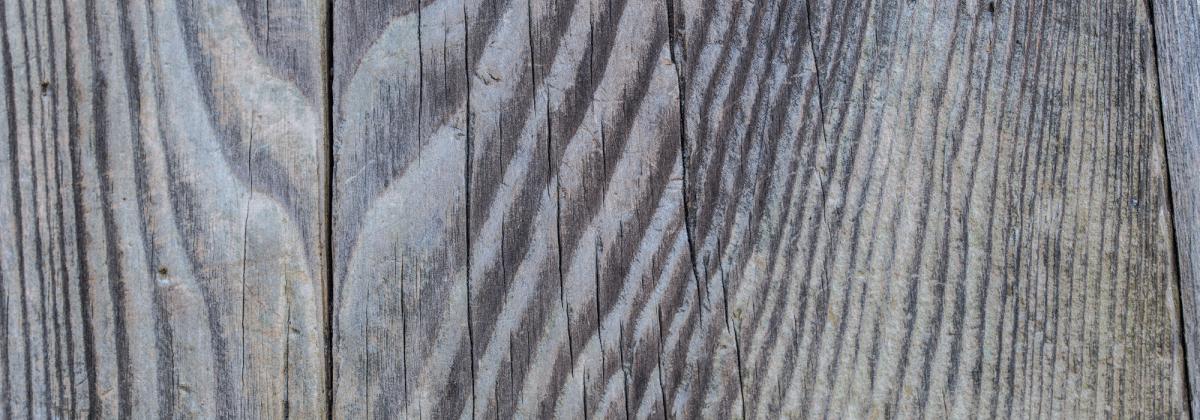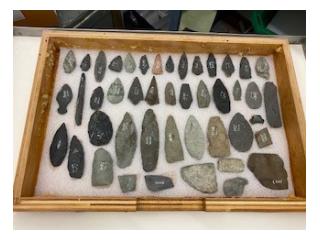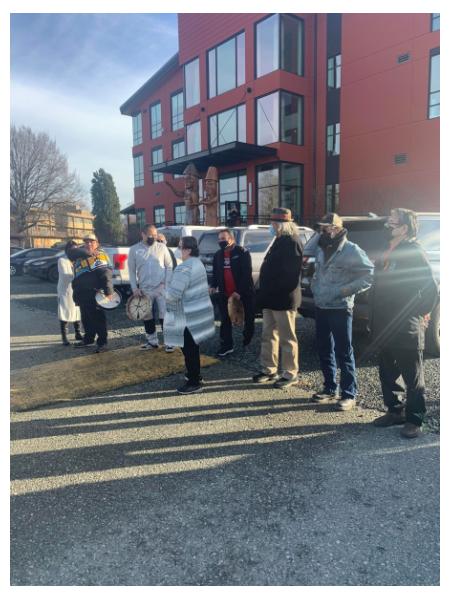
Modernization
Learn more about government’s intention to modernize the museum to protect our historic holdings and provide better access to our collections.

The Stó:lō Xyólhmet S’olhetawtxw Sq’éq’ip (Stó:lō House of Respect Caretaking Committee) is comprised of leaders, Elders, spiritual practitioners, and cultural knowledge holders overseeing repatriation activities on behalf of numerous Halq’eméylem-speaking Stó:lō communities in the Fraser Valley. The Committee formed and has operated since 2005, supported by technical staff from the Stó:lō Research and Resource Management Centre (SRRMC) at Stó:lō Nation. They have successfully brought home over 40 ancestors from multiple institutions in British Columbia over the past decade. In January 2022, the Committee worked with the Royal BC Museum to return six Stó:lō Ancestors and 146 Belongings (objects affiliated with an Ancestor from Yale First Nation). Restricted by COVID-19 concerns, a small delegation of Committee members and SRRMC staff travelled to the Museum and were greeted by local hosts from Songhees and Esquimalt First Nations, as well as RBCM Indigenous Collections and Repatriation (ICAR) staff. Welcome songs were sung and gifts exchanged as part of the proceedings, leading to a procession of delegates carrying the Ancestors and Belongings to a Stó:lō vehicle specially prepared for the journey home to the Stó:lō Research and Resource Management Centre in Chilliwack. The Ancestors and Belongings will rest for a time at the Centre as further cultural work and analyses are carried to out create biographies and prepare for the final portion of their journey home.

In Stó:lō culture “tómiyeqw” is a Stó:lō principle which translates into English as both “great-great-great-great-grandparent” and “great-great-great-great-grandchild” and expresses the responsibility and connection Stó:lō people have to the seven generations past and future. The connection between the two rests with those living today. “Mi t’ekw’stexw ye si:walelh tset’”, “We are bringing our ancestors home”, is an essential step in caring for those Ancestors and the community today, in support of a strong and healthy future.
Museums like the Royal BC Museum are now grappling with historical collection practices that are now recognized as unethical. Xwelítem (the Halq’eméylem term for non-Indigenous colonial settlers) collectors in the late 19th and early 20th centuries purposefully removed Ancestors’ remains from their homelands. Throughout the past century, Ancestors’ remains were sometimes accidentally uncovered during construction or resource extraction and sent to museums or universities without permission from Indigenous peoples.

Lets’emó:t means “One Mind” in Halq’eméylem. Siemthlut Michelle Washington (Repatriations Specialist, ICAR), Dr. Genevieve Hill (Curator, BC Archaeology Collections), and the RBCM Indigenous Collections and Repatriation (ICAR) team worked in the spirit Lets’emó:t with the Stó:lō Xyólhmet S’olhetawtxw Sq’éq’ip throughout the repatriation process. The ICAR team provided a great deal of support and took on much of the burdensome legwork to make the repatriation possible. They created a culturally safe space for the Stó:lō Xyólhmet S’olhetawtxw Sq’éq’ip to do the work that needed to be done in a good way. The Stó:lō Xyólhmet S’olhetawtxw Sq’éq’ip encourages other Indigenous groups to connect with RBCM for their own repatriation needs. The repatriation of Ancestors’ remains is contributing to reconciliation and the enactment of the UN Declaration on the Rights of Indigenous Peoples.
Community Contact:
Jill Levine
Project Coordinator and Researcher
Stó:lō Research and Resource Management Centre
Belongings can be found using the RBCM Collections search tool: https://search-collections.royalbcmuseum.bc.ca/